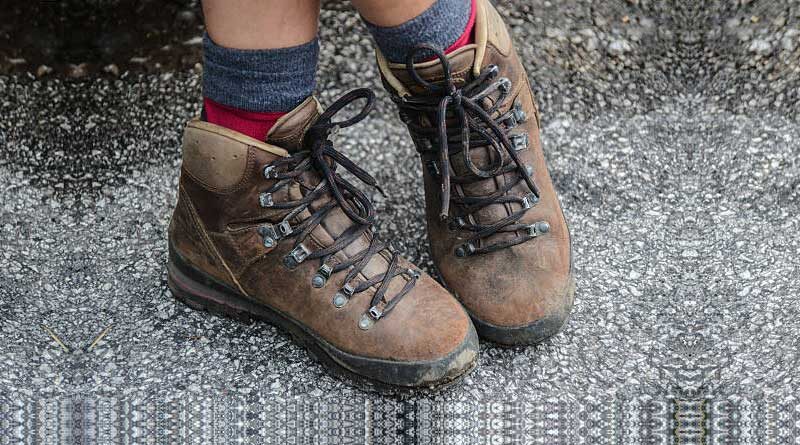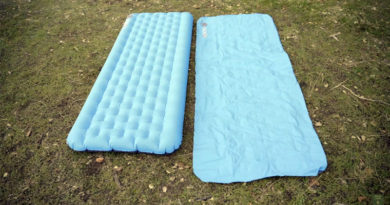Are Hiking Shoes Good for Concrete?
Making distinctions between the types of walking shoes, trail running shoes, and hiking boots can be blurry, and it is becoming more difficult to find the right shoe or boot for the right activity. Hiking shoes have come a long way since the time when they were just pretty much heavy working boots, and they have become much lighter with the option of being waterproof or non-waterproof. They have also developed into a shoe with the option of mid and low ankle ranges, as opposed to the traditional heavyweight boots, giving many options on which shoe or boot would best suit the activity.
Hiking Shoes are OK for Walking on Concrete
If you are planning to walk on concrete wearing hiking boots, you need to consider a few things. First, the sole of a hiking boot/shoe is designed to use on natural terrains like mud, grass, or loose soil. If you use them on a surface like concrete or pavement, they may feel a little uncomfortable. They are typically a bit stiffer in their construction and might have a little less damping in their sole. The stiffness can make them a bit uncomfortable if you are going to walk on longer concrete stretches, but shouldn’t be a problem for short walks.
If you are not intending on walking trails then purchasing walking shoes would be a safer bet, but if you want to combine the two without forking out for two pairs of shoes, then low/mid hiking boots would definitely be the way to go.
Which Shoes Should you Choose?
If you do decide to wear your shoes for short trips on concrete, then I would recommend going with a lightweight pair as you won’t necessarily need features like ankle support. Wearing full-fledged boots will add more weight, and heavy boots on a stiffer surface mean that your legs are going to tire more quickly.
Both affordable and multi-purpose, Mammut Osura Low GTX is an all-rounder and ideal pair for easy day tours, everyday activities, and trails in the mountains and forest. The shoes are reliable while both ascending and descending, offer good grip, waterproof, and ideal for all weather types.
What’s the Difference Between Hiking and Walking Shoes?
Hiking shoes tend to have a more solid and thicker sole than walking shoes due to the likelihood of stepping on a sharp rock or stick while on a hike. Whereas, walking shoes are often lighter and built for more quick movement. The cushion provided by the sole can be a different experience in a walking shoe, and it tends to feel slightly more solid, and less flexible.
Hiking shoes are better for ascending and descending as they provide ankle support and treads. The tread helps with traction on slippery surfaces. However, if you are going to walk long stretches on concrete, then walking shoes don’t particularly require bold treads and are lighter and more flexible.
Some Pros and Cons to Consider
There are also some pros and cons associated, so you need to consider them before making your decision.
The Pros
- Hiking shoes have a stiff shank: The shank is the plastic or metal part of the shoe. It is usually positioned between the sole and the midsole of the shoe or boot. The point of the shank is to provide rigidness and sturdiness from the heel through to the toe. Most boots tend to come in half, three-quarter, and full shanks, beginning from the heel and extending to the arch, ball, and boot end respectively. Generally speaking, rigidity and sturdiness is a requirement for steep terrain where large amounts of weight may be placed on a relatively small surface area of the boot.
- Insulation: Boots provide more warmth for those cold-weather treks.
The Cons
- Weight: Hiking boots or shoes are generally much heavier than normal casual shoes. This requires more energy to lift with every step you take.
- Warmth & Breathability: Boots are warmer and not as breathable as your regular shoes. This can lead to aches as well as a build-up of moisture due to perspiration. This presents a higher risk of blisters and swollen feet.
- Stiffness: Boots are stiff, both in the upper and in the cushioning, and need a break-in period’. Breaking in your boots or shoes will ensure against pain in the arch or balls of the feet.
Things to Consider
If you’re not going to a heavy backpack and you don’t need that extra ankle support, consider trail shoes, minimalist footwear, or sandals. To decide, you need to look at the demands of your route and your demands of comfort. Here are some conditions to consider before making the right choice on your footwear:
- Temperature. If it is hot, then minimalist shoes can become very unpleasant. Especially if walking on sand and rocks. It is not uncommon to have blisters form on the soles of your feet. If it is cold, then you’ll want to avoid sandals and bare-feet for frostnip.
- Experience. Consider your experience when choosing the style of footwear that you plan on buying. I know many experienced hikers that can go on minimalist footwear with 20kg packs.
- Comfort. Cushioning is an important part of most shoes. Minimalist shoes typically do not have any cushioning. Cushioning is more comfortable for the soles of your feet and is easier on your knees.
Conclusion
To conclude, hiking shoes can be used whilst walking on concrete. But it is advised to pick a pair that is not too heavyweight. Consider how long you will be walking, and if you are embarking on a long paved hike, then some walking shoes or lightweight trail runners should be considered.




